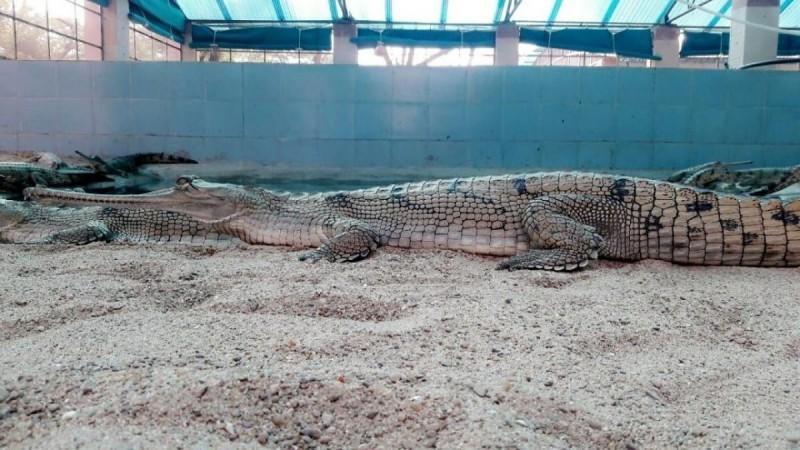A new report on Tuesday about plastic pollution and migratory species mapped hotspots and assessed its risk on migratory species in the Ganga and Mekong river basins which are protected under the UN's Convention on the Conservation of Migratory Species of Wild Animals (CMS).
In the Ganga river, the river dolphin, the gharial, a crocodile species, and the greater spotted eagle face the threat of dying from ingesting litter and by entanglement.
Together, the Ganga and Mekong rivers contribute to an estimated 2,00,000 tonnes of plastic pollution to the Indian Ocean and the Pacific Ocean every year.
The report, "Risk assessment of plastic pollution to migratory species in the Mekong and Ganga River Basins", focuses on the impacts of plastic pollution on freshwater and terrestrial species, which has been significantly understudied.
It was launched during the fifth session of the United Nations Environment Assembly (UNEA5) that began on Monday in this beautiful Kenyan city amidst the presence of environment ministers and other representatives from over 150 nations with high hopes to advance a global agreement on plastic pollution, among a series of draft resolutions on biodiversity and health, green economy, and circularity.
Talking about the report, CMS Executive Secretary Amy Fraenkel told IANS: "This study confirms that plastic pollution is adversely impacting migratory species in freshwater and terrestrial settings. It provides an important tool to assess potential risk on such species that can be used globally."

While there are many studies that examine the impact plastic pollution poses to marine wildlife, the impacts on freshwater species are much less well studied.
Research on plastics in freshwater ecosystems account for only 13 per cent of the plastics studied in all aquatic environments. Only four per cent of peer-reviewed studies on the impacts of plastic pollution are relevant to terrestrial ecosystems.
Both the Ganga and Mekong rivers are home to 605 species protected under CMS, including freshwater species, land animals, and birds. Many of them are listed as threatened or endangered by the IUCN.
Among its findings, the report concludes that in the Asia-Pacific region discarded fishing gear is a particular threat to migratory species. Of migratory species studied, five in the Mekong and 19 in the Ganga are most at risk.
In Mekong, it is estimated that the critically endangered Mekong catfish and the Mekong river subpopulation of the Irrawaddy dolphin face lethal threats from entanglement and ingestion of plastic.
Drowning because of entanglement in nets is the key threat to Irrawaddy dolphins that are estimated to number less than 100 individuals.
The Mekong catfish is considered a flagship species for the conservation of the lower Mekong ecosystem. It is long-lived, matures late, and is a long-distance migrant. This makes it even more vulnerable to human disturbances such as plastics and dams.
In the Ganga, the Ganges river dolphin is at high risk of entanglement in fishing lines, especially in gillnets.
Ingestion of microplastic is an additional threat. The Gharial, a crocodile species, is likely to become entangled in fishing nets where fisheries overlap with its habitat. It is critically endangered.
Raptors assessed to be at the highest risk among birds, warns the report.
With nearly 500 species -- birds represent over 80 per cent of the CMS-listed species in the Asia-Pacific region --there is significant evidence for bird interaction with plastics.
Migratory birds have been observed making nests out of plastics, using fishing lines and shipping debris, often resulting in the entanglement of their chicks.
Two raptor species assessed are found to be particularly impacted: In the Ganga, the greater spotted eagle is threatened and may die from ingesting litter and by entanglement.
In the Mekong, the eastern imperial eagle may suffer lethal injuries upon ingestion and entanglement in plastic.
Waterbirds such as the greylag goose, common shelduck, gadwall, northern pintail, common teal, red-crested pochard and the tufted duck may interact with plastic in the environment. In some cases, waterbirds ingested plastics including microplastic.
But also, waders such as the black-tailed godwit, Eurasian curlew, marsh sandpiper, common greenshank, green sandpiper and Temminck's stint can become entangled where line fishing occurs.

Among terrestrial species, Asian elephants have been observed ingesting plastic while raiding dump sites for food. The impacts of ingestion by elephants, however, largely remain unknown.
The report says more research on freshwater and terrestrial environments is necessary to fill data gaps. Hence, the report strongly encourages more research on possible adverse impacts in freshwater and terrestrial habitats.
The recommended actions include upstream reduction of plastics in the commerce stream through industry and government regulations, incentives, and practices and more effective product design, waste management and recycling.
Also include the reduction of plastic pollution in conservation measures for migratory species and education campaigns and programmes to raise awareness among citizens.

















